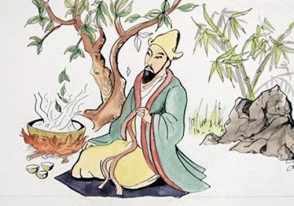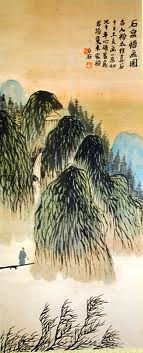 Over the past 5,000 years other civilizations have come and gone but Chinese civilization has survived and thrived. Over the past 5,000 years other civilizations have come and gone but Chinese civilization has survived and thrived.
Foreign visitors love to see the tourist sites related to ancient China and those ancient historical sites give modern China an opportunity to emphasize its cultural seniority to the whole world, so those sites receive special attention and special funding and special protection.
Shennongjia (pronouced SHEN-NONG-JI-A) in Hubei Province is one of those places primarilly because of Emperor Shennong (SHEN-NONG).
Emperor Shennong is one of the founding fathers of Chinese civilization. Unlike other ancient rulers around the world he was neither a warlord nor a descendent of nobility before coming to power. Rather, he was an herb collector and proto-scientist.

Shennongjia means "Emperor Nong's Ladder"
4,500 years ago Shennong used a long bamboo ladder to explore the steepest slopes of the Daba Mountanis in search of new herbs with medicinal potency. He found many new plant species including the tea plant. He was the first person to boil tea leaves to make hot tea.
No drink in the West is comparable to tea in East in terms of how much cultural importance and ceremony is attached. China, Japan, Vietnam, Indonesia, Nepal, Tibet, India, etc., all have traditional tea ceremonies. They have their own strains of the tea plant too but every strain of tea and every tea ceremony throughout Asia can trace its history back to Shennong and his ladder.
Shennong discovered many other plants with medicinal potency. His studies and teaching about herbal medicine is actually the core of TCM (Traditional Chinese Medicine).
TCM, as a written, codified system of medicine, has been taught in China continuously over the past 4,500 years. It's continuity shows that Chinese civilization has transcended the ages and is unquestionably the oldest civilization on Earth, by a wide margin.
Shennongjia became a unique capsule of prehistoric China because the area always been highly resistant to climate change.
There are 2,000+ plant and herb species in Shennongjia that exist no where else in Asia. Those rare species survived in Shennongjia when climate change drove them to extinction everywhere else. They needed millions of year to evolve but in phases over tens of thousands of years they were killed off by things like Siberian ice sheets, extended droughts, and dramatic temperature swings.
Shennongjia was immune to all that climate change due to a combination of geographic and atmospheric factors. The geographic position of the mountain range and its elevation and the regional air flow patterns rebuffed the advancing ice sheets but also kept it moist and cool when conditions were hot and dry in the lowlands for long periods.
The expanding human population changed the ancient landscape of the lowlands of China but climate change would have been a more powerful force for species extinction. Climate change was reducing biodiversity in China long before human civilization would have had a substantial impact.
Many species perished but humans and primates were able to adapt to the changes. Then Emperor Shennong helped ancient Chinese people reap the benefits of the situation. He found a holdout plant in Shennongjia which became so universally popular that it created the first form of international trade.
The tea trade has been going on for thousands of years in China and has been enormously influential in the development of Chinese civilization. In gratitude, Chinese people still make offerings to Emperor Shennong at the altar shown in the photo below.

Huge monument and altar to Emperor Shennong just outside the preserve. There are Yerens in these mountains behind this monument.
|





















